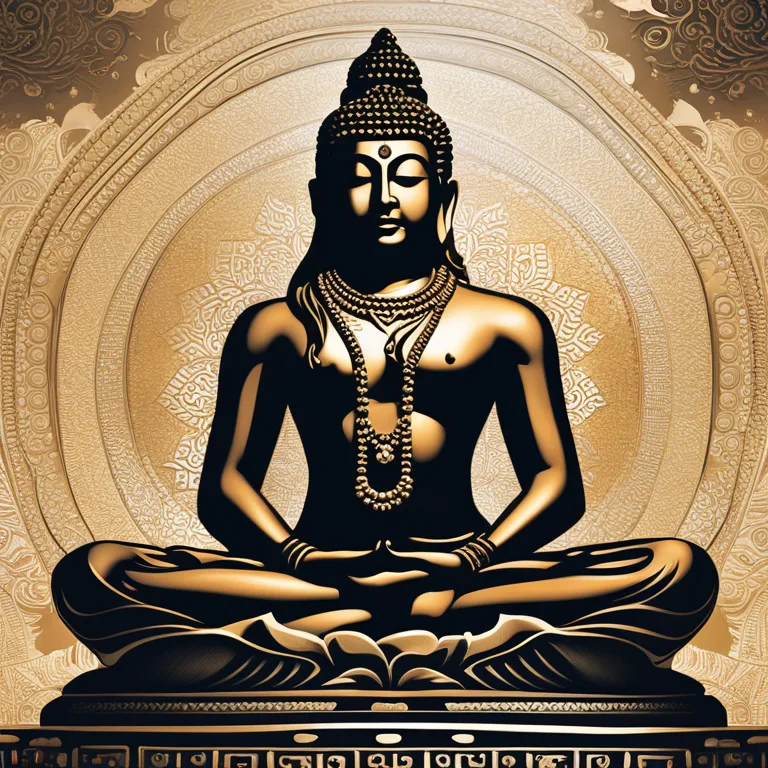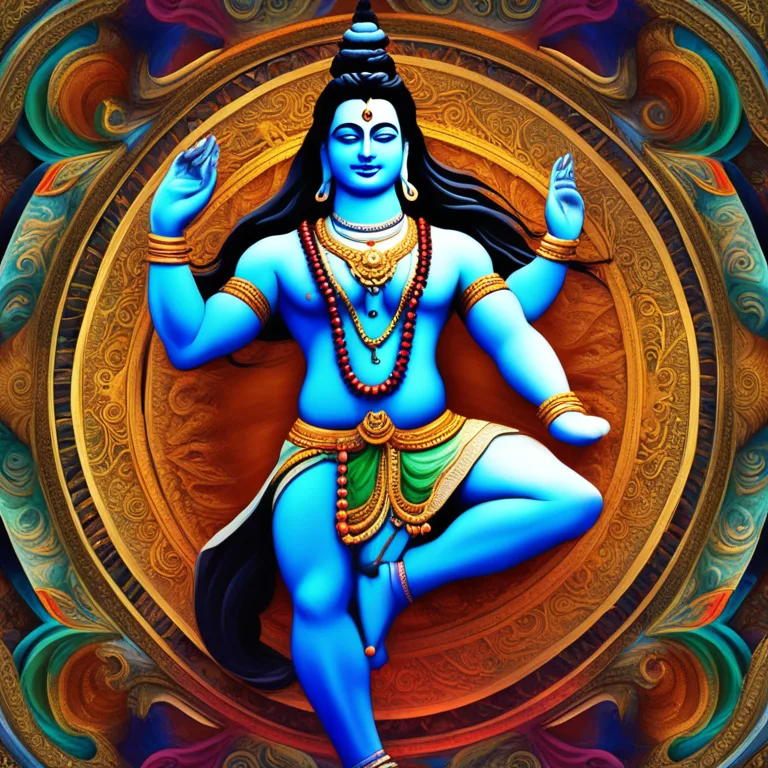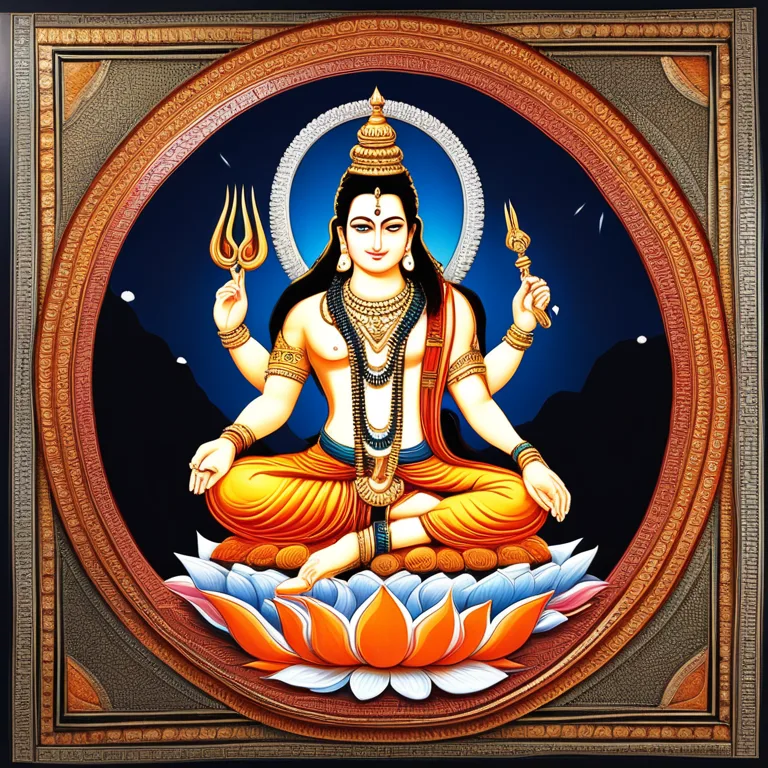
Meditative Practices Inspired by Shiva
Discover meditation techniques influenced by the lore of Lord Shiva, designed to enhance spiritual understanding and inner peace.
article by Hina Kurosawa
Introducing Shiva's Meditation
Meditation has been an integral part of spiritual development within various traditions. Lord Shiva, one of the principal deities of Hinduism, is often depicted in deep meditation, symbolizing his association with the practice. In the contemporary spiritual landscape, where ancient wisdom is more accessible than ever before, Shiva's meditation techniques have become particularly relevant. These methods aim to transcend the ordinary experience of self, leading practitioners towards the realms of heightened awareness and profound calmness. In this exploration, we dive into the core principles that underpin the meditative practices inspired by Lord Shiva.

Shiva's Cosmic Dance and Stillness
One of the most powerful symbols in Shiva iconography is his cosmic dance, known as 'Tandava,' which represents the dynamic cycle of creation and destruction. Yet, it is in his stillness where we find mediation guidance. Shiva's still form, 'Dhyana Mudra,' encourages seekers to find balance between movement and stillness within their meditation practice. As we sit in silence, we strive to emulate Shiva's focused tranquility, recognizing that within every end is the seed of a new beginning. This philosophical approach aids in embracing the ebb and flow of thought, emotion, and sensation without attachment, a cornerstone in the development of meditative discipline.

Mantra Meditation: Om Namah Shivaya
Central to Shiva meditation is the mantra 'Om Namah Shivaya.' This powerful invocation is said to carry the essence of all of Shiva's energy, encapsulating his grace, strength, and transformative power. Practicing mantra meditation involves repeating this chant silently or aloud, allowing its vibrations to penetrate deeply into the consciousness. In doing so, one is said to not only honor Shiva but also to vitalize one's own inner potential. This form of meditation serves as a bridge connecting the practitioner with the vastness of the universe and the depths of the self. The constant repetition harmonizes body, mind, and spirit, fostering an environment where insight and enlightenment can flourish.

Yoga and Shiva's Influence
Shiva is often referred to as 'Adiyogi,' the first yogi, linking him intimately to the practice of yoga, which is inherently meditative. Asanas or physical postures, primarily designed to prepare the body for meditation, are a manifestation of this connection. In integrating yoga with meditation, practitioners aim to achieve a state that Shiva embodies—one of absolute awareness and liberation. Postures such as 'Padmasana' (Lotus Pose) are traditionally associated with meditation, facilitating a steady and comfortable position that supports prolonged periods of focus and introspection. By aligning the spine and calming the nervous system, yoga paves the way to depth in meditation, mirroring the poise and serenity associated with Lord Shiva.

Chakra Meditation: Bridging the Physical and Spiritual
According to the traditions, Lord Shiva is deeply connected to the chakras, energy centers within the subtle body. Meditating on these chakras, particularly the 'Ajna Chakra' or third eye, channels focus on inner wisdom and intuition, qualities epitomized by Shiva. This technique involves visualizing an indigo light or 'AUM' symbol at the center of the forehead, the seat of spiritual insight. As concentration deepens, the meditator may experience a greater sense of unity with the cosmic order, an ultimate goal of Shiva's teachings. The regular practice of chakra meditation can lead to spiritual awakening, unlocking realms of consciousness that remain largely untapped by everyday awareness.
Dissolving into Shiva's Essence
The ultimate aim of meditating on Shiva is to realize the 'Shiva Tattva,' the essence that permeates everything. It is to understand that Shiva is not merely an external deity but an internal aspect of oneself. Through meditation, seekers aspire to dissolve their ego-driven identities and merge with the universal spirit symbolized by Shiva. By sitting in contemplation of the boundless, one begins to dissolve the illusion of separation, recognizing the inherent oneness of all existence. This profound inner journey moves the practitioner closer to a state of 'Sat-Chit-Ananda,' being-consciousness-bliss, which is the nature of Shiva and the ultimate goal of spiritual pursuit.
Published: 12/20/2023
Modified: 12/20/2023
More predictions
Come back here soon to learn more about yourself and your future


Sport life: Meditation Techniques for Athletes
Learn how meditation can enhance athletic performance, improve focus, and accelerate recovery. Discover key techniques tailored for the physical demands of athletes.


Pregnancy Meditation Techniques
Discover serene and effective meditation techniques tailored for expectant mothers to enhance prenatal wellbeing and connect with their unborn child.


Unlocking Meditation Techniques
Discover various meditation techniques to enhance mindfulness and spiritual well-being. This article introduces a range of practices suitable for both beginners and seasoned practitioners.